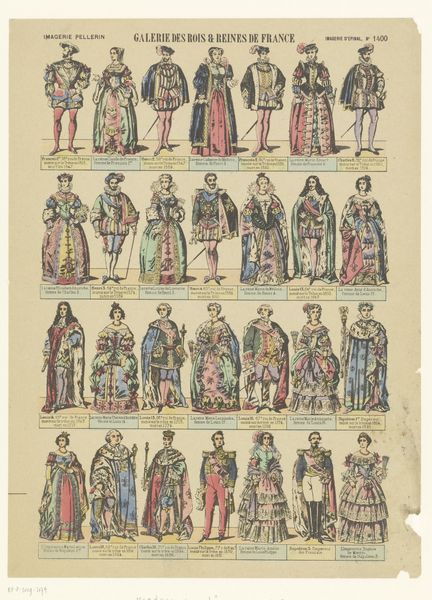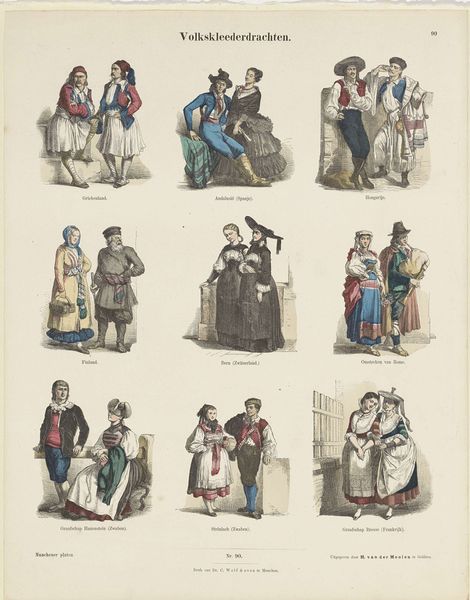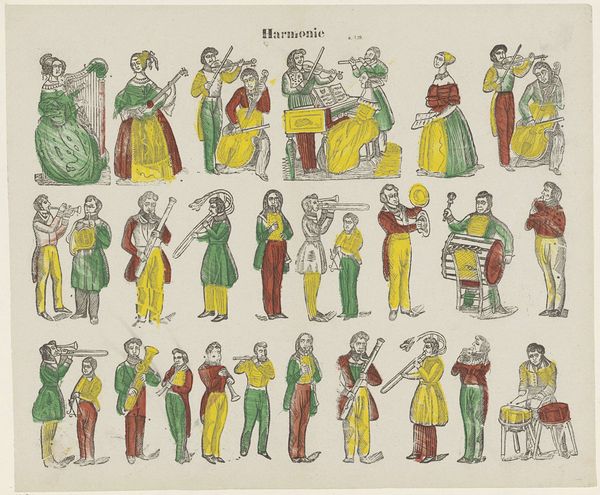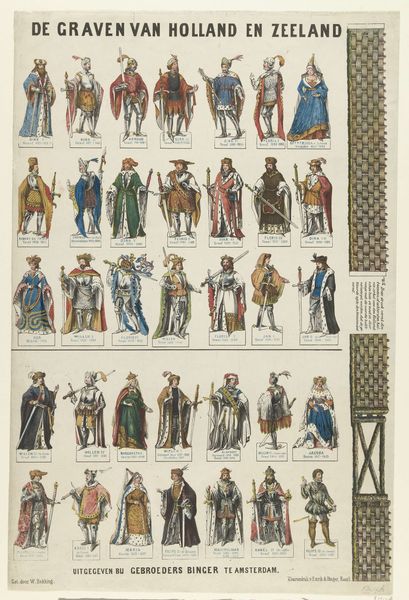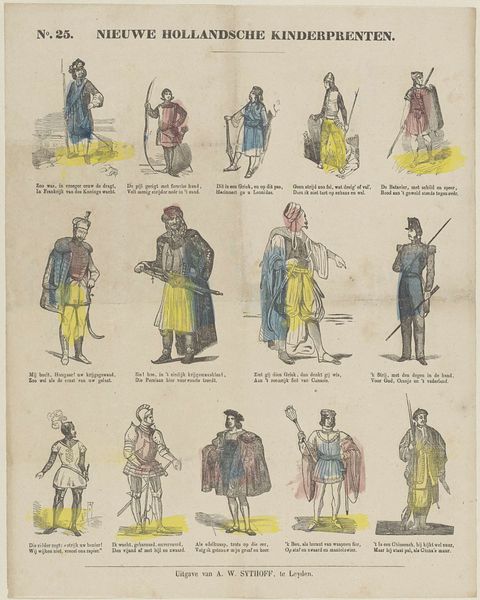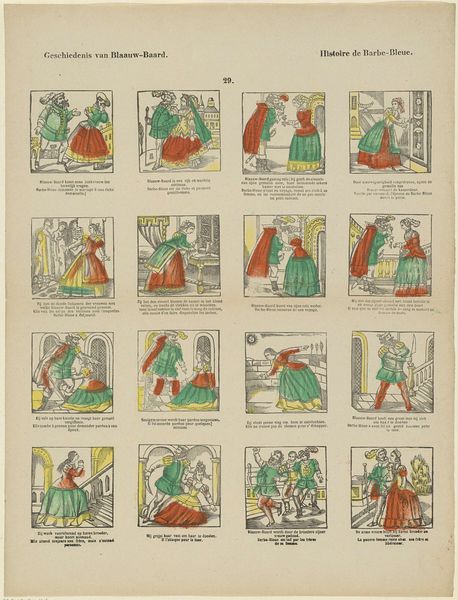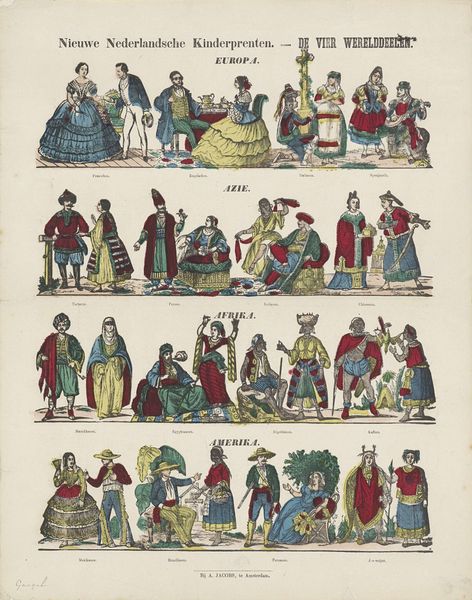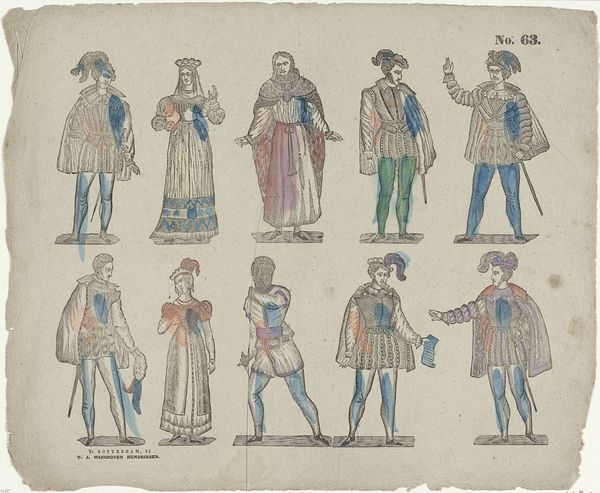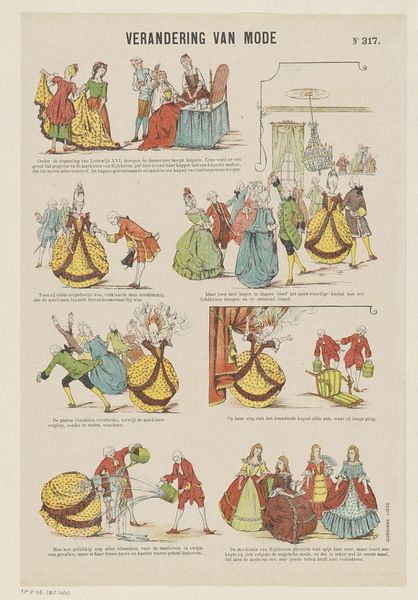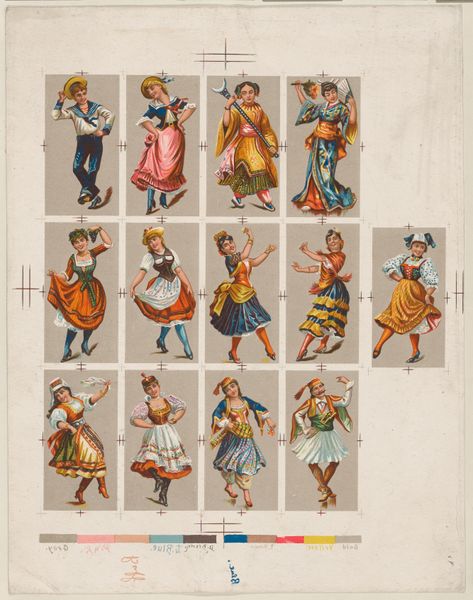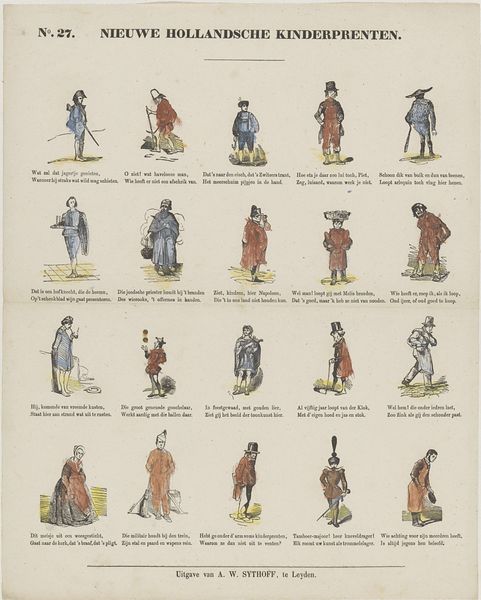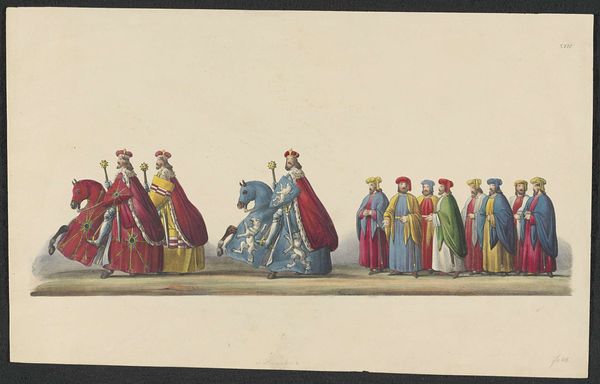
Zie hier, o lieve jeugd! van uit het verre Oosten, / Veel volkeren bij een, elk in zijn kleederdragt, / Tartaar en Arabier, Armeniers, Kalmukken, / Vindt gij, tot uw vermaak, hier nu te zaam gebragt 1848 - 1881
0:00
0:00
lutkiecranenburg
Rijksmuseum
Dimensions: height 381 mm, width 304 mm
Copyright: Rijks Museum: Open Domain
Curator: Looking at this intriguing print, created between 1848 and 1881 by Lutkie & Cranenburg, you'll find it’s entitled "Zie hier, o lieve jeugd! van uit het verre Oosten, / Veel volkeren bij een, elk in zijn kleederdragt, / Tartaar en Arabier, Armeniers, Kalmukken, / Vindt gij, tot uw vermaak, hier nu te zaam gebragt". Editor: Immediately, I notice the almost encyclopedic layout – rows of figures, each distinct. It feels like a catalog of characters, doesn't it? There's a definite romantic aura to this presentation, likely due to its colors and the attention to detail in the clothing of the people represented. Curator: Precisely. Its execution via drawing, print, and watercolor marks it firmly within artistic conventions, but I'm compelled to point out the title – how it explicitly frames the image for the youth. This highlights the era’s particular attitude toward instructing future generations about global diversity. And importantly, observe its designation under "Orientalism"—what do you think of that? Editor: Well, the categorization rings true—each figure, be it Tartar or Arab, serves as a symbol for the "exotic other", fulfilling the cultural expectations and fascination of that period. There's a curated quality to it, these aren't presented as ordinary people so much as emblems. They fit into specific pre-packaged stereotypes for the era. I wonder what kind of underlying emotions these illustrations were meant to convey and provoke, at that time. Curator: Indeed. And given the history surrounding "genre-painting" during the time it was conceived, we see how public imagery reinforces these constructed roles. The artists, here, navigate their creative license within an overarching power structure of artistic norms. Editor: In summary, this image—though aesthetically pleasing—reminds us of the deep cultural weight even seemingly innocent portrayals can bear, urging us to decode them with care. Curator: A perfect articulation of how art functions as both historical record and active cultural agent.
Comments
No comments
Be the first to comment and join the conversation on the ultimate creative platform.
